At the beginning of its application, carbon fiber is usually widely used in high-end fields such as military and military sheet metal fabrication. With the in-depth research on carbon fiber materials, the successful production of all carbon fiber subway cars some time ago has made carbon fiber play a more important role in the field of rail transportation. In this article, let’s take a look at the advantages of carbon fiber used in rail transportation.
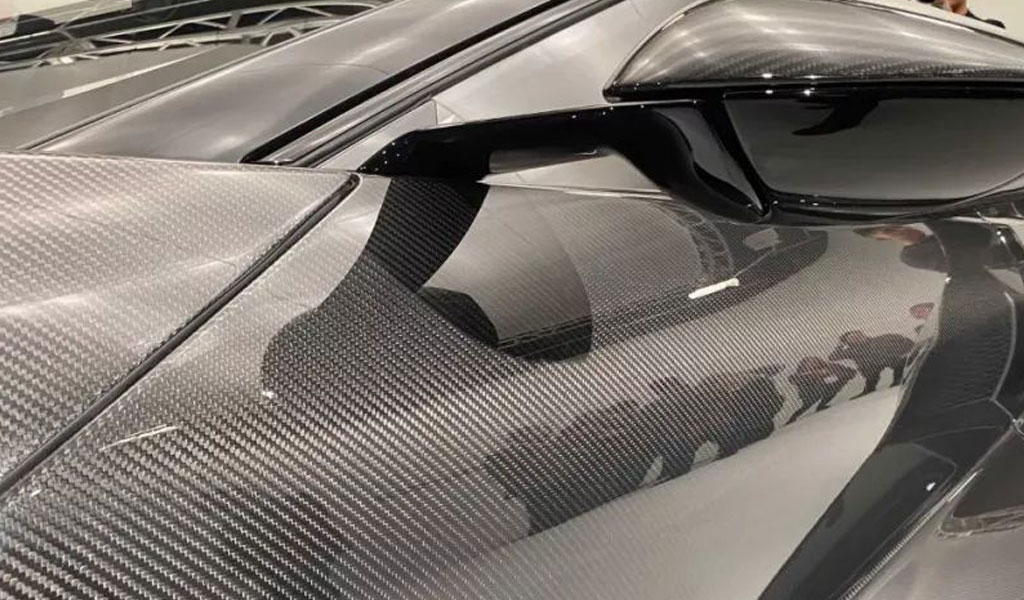
Reducing energy consumption and reducing self-weight are inseparable. Rail vehicles need to consume huge amounts of energy during running. These energy are mainly used to overcome the resistance of trains in high-speed operation.
As an excellent weight-saving material, carbon fiber has a density of only 1.7g/cm3, which can reduce the weight by 30% compared with aluminum alloy and 45%-50% compared with steel materials. It can effectively reduce energy consumption and improve cruising range.With the development of science and technology, composite materials are increasingly used in aviation, aerospace, medical equipment, transportation and other fields.
Composite materials refer to two or more different materials that are made into new materials through appropriate physical or chemical methods. Fiber reinforced composite materials are a very common composite material, which mainly include glass fiber, carbon fiber, basalt fiber and aramid fiber. Carbon fiber is a new fiber material with high strength and high modulus containing more than 95% carbon. In addition to its high modulus and strength, carbon fiber has excellent spinnability. It has become a common reinforcing material and has been widely used in various fields.
Technical Advantages Of Carbon Fiber Composite Materials
At present, the mainstream materials for rail transit vehicles include aluminum alloy, stainless steel and carbon steel. The aluminum alloy machining body has stress corrosion, difficult surface treatment, and welding requirements.
High and low fatigue strength; stainless steel cars have problems such as poor sealing, local buckling and welding deformation; carbon steel car bodies have problems such as easy corrosion, not conducive to lightweighting, large welding deformation, etc. New materials need to be developed to meet new challenges , Carbon fiber composite materials, as an advanced material, have gradually entered the field of researchers’ vision and become a research hotspot for applications in rail vehicles. Compared with commonly used metal materials for car bodies, carbon fiber has better mechanical properties. The detailed comparison is shown in Table 1.
After analysis, the technical advantages of carbon fiber applied to rail vehicles are as follows.
- First, the density is low. The density of carbon fiber composite materials is generally below 2g/cm3, which is lower than ordinary metal materials. Using carbon fiber composite materials to make vehicle parts can effectively reduce the weight of the vehicle body and reduce energy consumption.
- Second, it has good fatigue resistance. Carbon fiber composite materials are fiber continuous network structures. Cracks are not easy to spread in the material, which improves the safety performance of trains. Carbon fiber composite materials also have impact resistance and high damping properties, which can reduce vibration and reduce vehicle body noise.
- Third, it has good corrosion resistance. Most fiber-reinforced composite products have good corrosion resistance and can well solve the corrosion problem of metal and other materials in harsh outdoor environments, thereby extending the service life of vehicles and reducing maintenance costs.
- Fourth, thermal stability. Carbon fiber composite materials have a small thermal expansion coefficient and good stability; their thermal conductivity is small, only 1/100 to 1/200 of steel, making them excellent thermal insulation materials.
Development Status Of Carbon Fiber Composite Materials In Rail Vehicle Applications
The foreign rail transit industry started research on carbon fiber composite materials for trains earlier. It has achieved many technological breakthroughs and accumulated rich experience in engineering applications. The applications range from non-load-bearing parts such as interior decoration, in-car equipment and cab covers. Secondary load-bearing components are expanded to main load-bearing structures such as car bodies and bogies.
In the early 1990s, the Swiss Schindler Bus Company used a carbon fiber winding method to make the car body. The prototype car it produced met the strength and stiffness requirements. It passed operating tests on the railway line and achieved the expected results; in 2000, France adopted A double-layer TGV trailer prototype has been produced using composite materials such as carbon fiber and glass fiber, as shown in Figure 1. Tests have shown that the composite body has outstanding advantages in vibration performance and thermal insulation and fire resistance, which improves passenger comfort. The composite body is 25% lighter than the aluminum alloy body.
The most representative one was the TTX tilting train developed by South Korea in 2007, as shown in Figure 2. The train body structure adopts a hybrid design. The roof, side walls and end walls are made of sandwich composite materials, and the underframe structure is made of stainless steel. The sandwich composite materials are made of carbon fiber epoxy resin laminates and aluminum honeycomb sandwich panels bonded together. The core thickness is 40mm; the inner and outer thicknesses of the carbon fiber epoxy resin laminate are 1.5mm and 3.5mm respectively. Compared with the traditional aluminum alloy car body, the total mass of the Korean TTX train body structure is reduced by about 40%. Tests have proven that the static strength, fatigue strength, modal characteristics and fire resistance of the car body structure meet the design requirements. The TTX tilting train was officially put into commercial operation in 2010.
Domestic Carbon Fiber Body
Domestic research on the application of carbon fiber composite materials in rail vehicles is relatively late, but it is developing rapidly and has achieved some results. In December 2011, the higher-speed test train developed by CRRC Sifang adopted a carbon fiber composite hood, which reduced its weight by about 50%. The composite hood has excellent impact resistance and mechanical properties and can withstand a 1kg aluminum bullet. 660km/h high-speed impact and 350kN static load.
In 2018, CRRC Changchun Railway Vehicles developed a new generation of subway trains and the “Optics Valley Quantum” tram. Both vehicles use carbon fiber composite material bodies to achieve lightweight train design; in September 2018, CRRC Sifang released a new generation of carbon fiber subway vehicle “CETROVO”, as shown in Figure 3. “The new generation of subway vehicle adopts advanced carbon fiber technology. The car body, bogie frame, driver’s cab, equipment cabin and equipment body are all made of carbon fiber composite materials. , is a subway vehicle that uses carbon fiber composite materials on a large scale. Compared with traditional materials such as steel and aluminum alloy, the weight of the vehicle is reduced by 13%.
In the 1980s, Germany developed the world’s first fiber composite bogie frame model HLD-E, and then developed the second HLD-L bogie frame.
Later, based on the successful operation of the HLD-E and HLD-L bogie composite structures, the HLD-300 bogie for ICE high-speed trains was produced. The structure was tested on the rolling test bench in January 1993. , an operation test was conducted on the line in March 1993, and the maximum speed of the test reached 330km/h.
Japan has obvious advantages in the research and development of composite bogies. In 1989, Japan Railway successfully trial-produced a CFRP bogie frame. The side beams of the frame are a CFRP laminated material laminated structure with a plate thickness of 16.4mm; the cross beams are wound and formed, and the frame has a dead weight of 0.3t, which is 70% lighter than an ordinary steel frame. In 2014, Japan’s Kawasaki Heavy Industries Co., Ltd. developed a new generation of bogies for railway vehicles, efWING, as shown in Figure 4. For the first time in the world, this bogie uses carbon fiber reinforced composite materials with suspension functions to make leaf springs. Compared with the traditional steel frame, the weight is reduced by about 40%, which is equivalent to a reduction of 900kg per vehicle. This significant weight reduction effect improves energy efficiency. utilization and reduce carbon dioxide emissions.
In addition to bogie frames, current foreign research and development is gradually extending from auxiliary non-load-bearing structural parts to load-bearing components such as wheels, axles, brake discs and mounting brackets.
Domestic Carbon Fiber Bogie
At present, the china cnc machining application of bogie frames and other main load-bearing parts is almost blank. Basic design theory and design solutions are lacking, and new molding processes are still being explored. Currently, CRRC Sifang and Dresden University are cooperating to develop a new carbon fiber composite bogie. CRRC Puzhen has developed a bogie carbon fiber bolster safety crane. The structure is basically the same as the original steel safety crane structure. It is formed by high temperature and high pressure in an autoclave. The thickness is reduced from the original 16mm to 8mm, and the weight is reduced from the original 13kg to 1.7 kg, but the strength of the carbon fiber safety crane is much better than that of the original steel material. After simulated long-life tests and impact and vibration tests, the safety crane did not produce cracks or mechanical damage. It has been installed and run for more than 1 million kilometers and is in good condition, as shown in Figure 5. A CFRP composite structure is currently being developed and a preliminary design has been formed.
Thinking And Outlook
As the requirements for lightweight and low-carbon environmental protection of rail vehicles increase, carbon fiber composite materials will be increasingly used in rail transit vehicles. However, the application of domestic carbon fiber composite materials in rail vehicles is still in its infancy. In view of the development situation of domestic carbon fiber , the author believes that research can be carried out from the following aspects:
First, carry out basic performance research on carbon fiber composite materials, give full play to the advantages of materials, and solve application limitations.
Secondly, in terms of material selection, consider using mixed use of composite materials, such as using glass fiber, carbon fiber, etc. in the design, giving full play to the performance and price advantages of each material, and overall consideration of weight reduction and cost reduction.
Thirdly, structural optimization and integrated design ideas include comprehensive consideration of the design plan in combination with the molding process.
Finally, strengthen the integration of industry, academia and research, give full play to their respective advantages, and form products with independent intellectual property rights as soon as possible.
The mechanical properties of carbon fiber composite materials are also very prominent. In the production process of rail vehicles, its service life needs to be considered, and there will be no fatigue failure during the working process. Carbon fiber composite materials have excellent anti-aging ability and can ensure their own service life. . And carbon fiber composite materials also have a certain tensile force and minimal deformation.
China Be-cu Prototype Material Technology Co., Ltd. was established in 2005 and has a production workshop of more than 5,000 square meters. It is a professional manufacturer of carbon fiber products, which can meet the application of carbon fiber products in rail transit, automobile industry, medical equipment, and other fields. Insist on bringing high-quality carbon fiber products to customers.
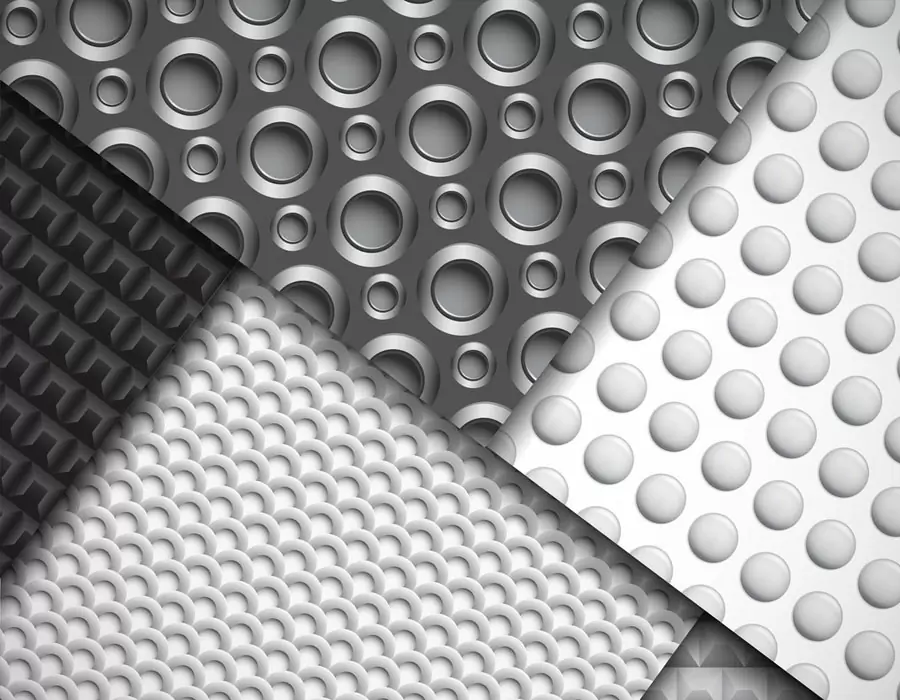
ISO 9001 certified. BE-CU Prototype Offering CNC machining carbon fiber and other manufacturing services for carbon fiber marterial. Various capabilities include notching, labeling, drilling carbon fiber, grinding, laser cutting carbon fiber, finishing, plating, marking, CNC milling carbon fiber and turning carbon fiber.We stock high quality 3k carbon fiber sheet in a variety of thickness, types and finish. Its a great material used in applications where light weight and strength are needed such as drones. Unlike other workshops, we have no min order and are often filling orders with a single part. We also don’t make you pay for the full sheet and you only get charged for what is used. With a large selection of material, you should find everything you need to make your project come to life. We are also able to handle larger production runs and provide a competitive pricing. If we don’t have the material or finish you require, we are more the willing to look at bringing it in for you.
What Is Carbon Fiber?Carbon fiber is made of polyacrylonitrile (PAN) (or pitch, viscose) and other organic fibers by carbonization (removal of most elements except carbon) by pyrolysis method under inert gas at high temperature above 1,000 °C. Inorganic polymer fibers with a carbon content of more than 90%.
-

3D Printing Continuous Fibres
-

3D Printing Short Fibre Filled Wires
-
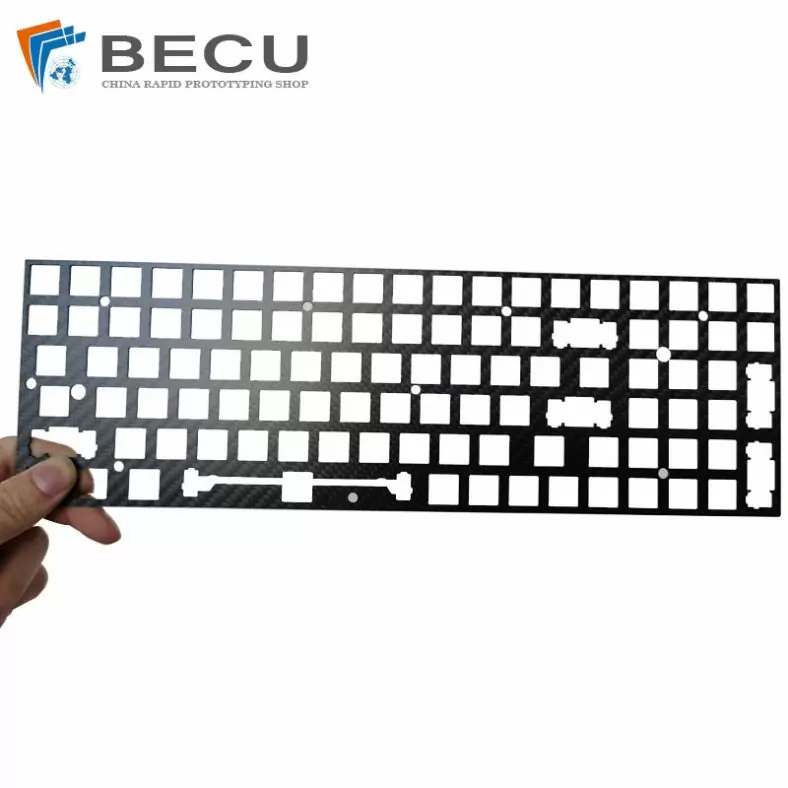
Laser Cutting Carbon Fiber Positioning Keyboard
-

Cnc Turning Industrial Copper-Aluminum Clad Carbon Fiber Machinery Parts
-
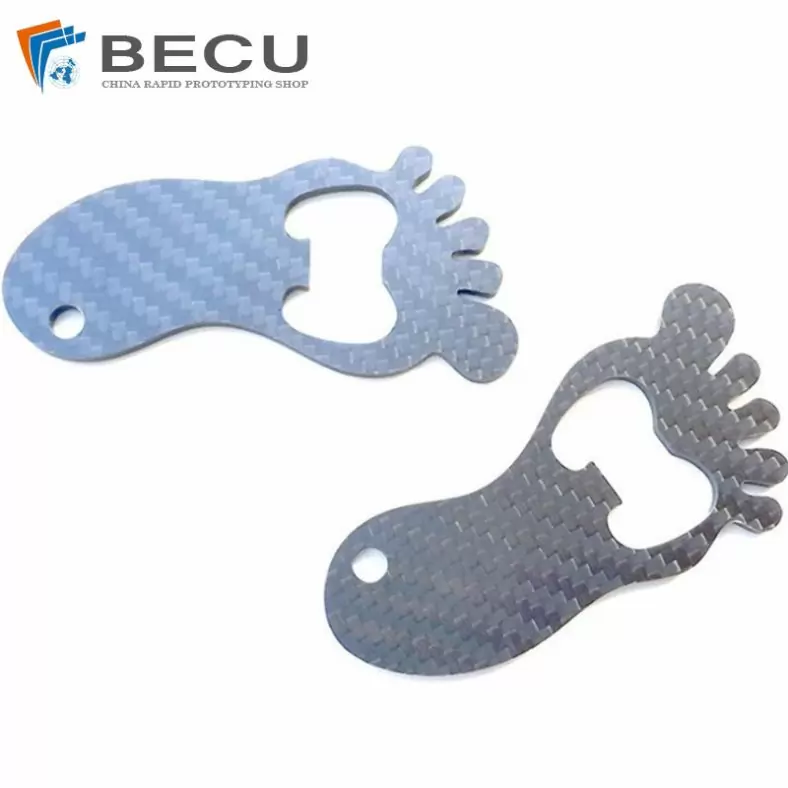
Carbon Fiber Luggage Tag Ornaments
-
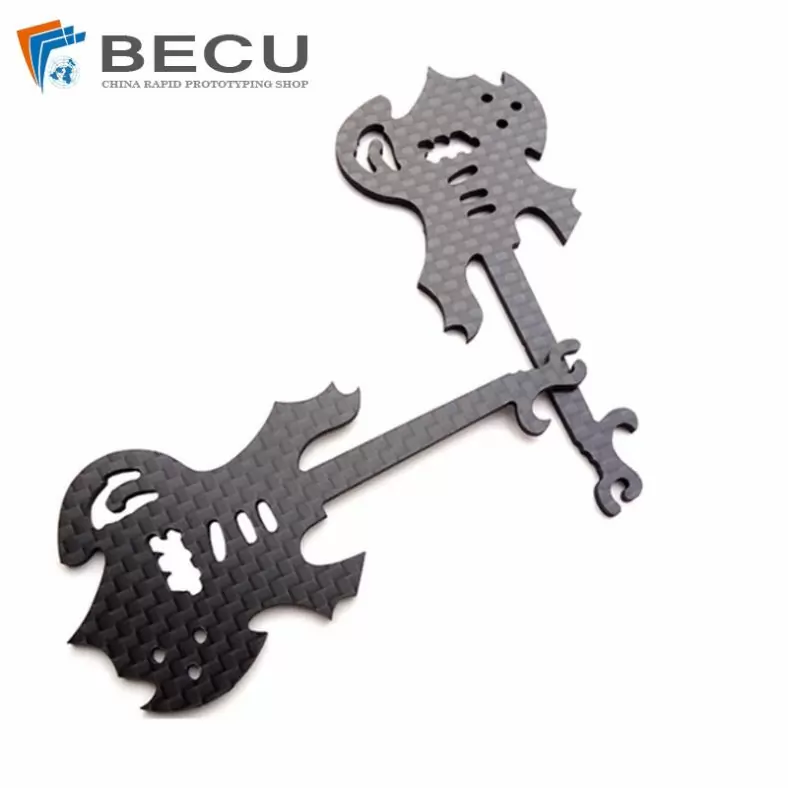
Laser Cutting Carbon Fiber Guitar Shape Crafts
-
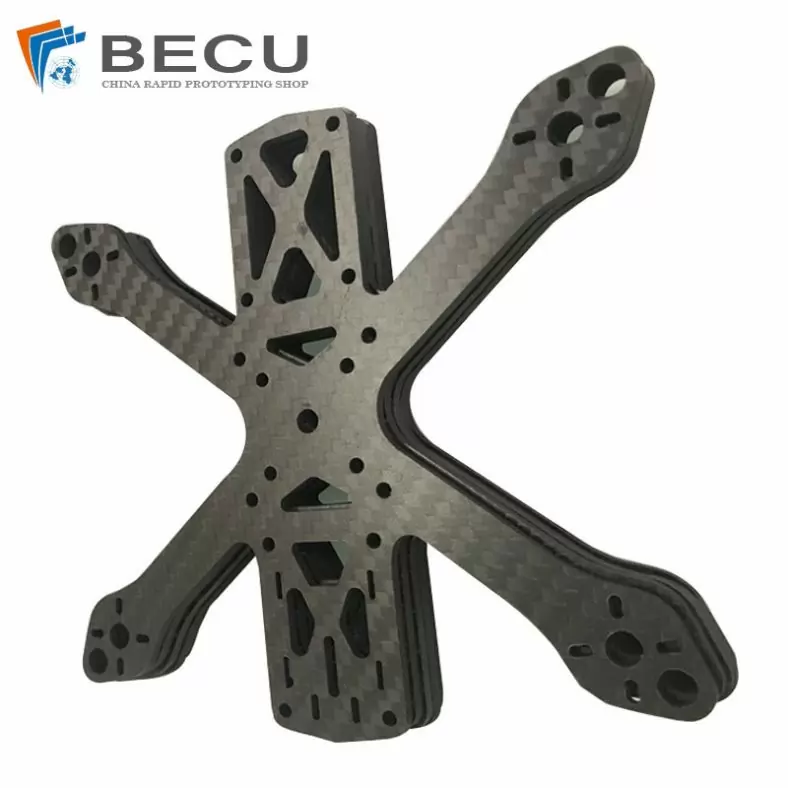
Laser Cutting Carbon Fiber Drone Rack
-
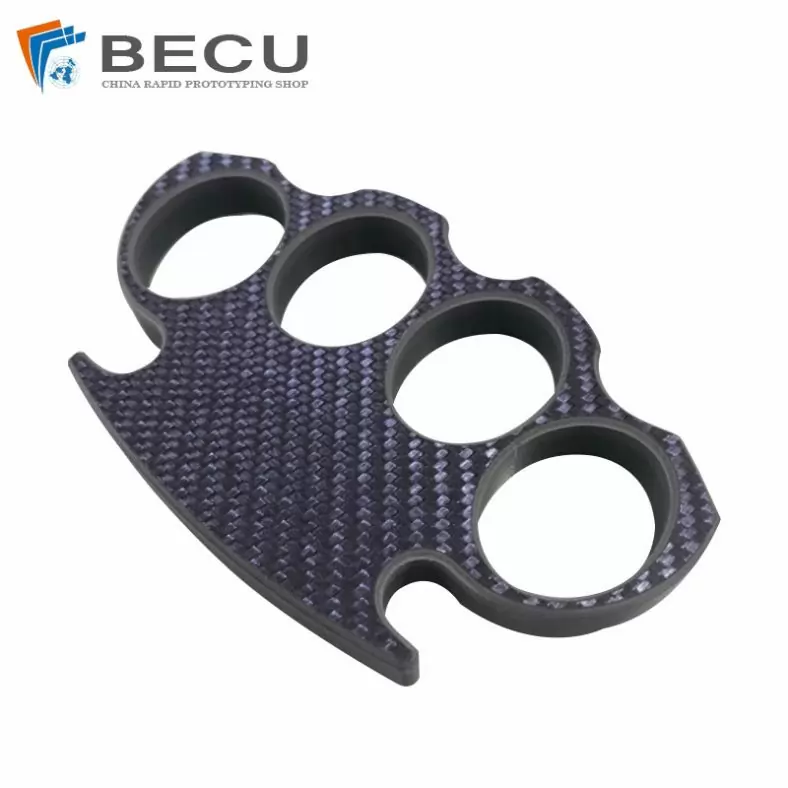
Cnc Milling Carbon Fiber Finger Buckle
